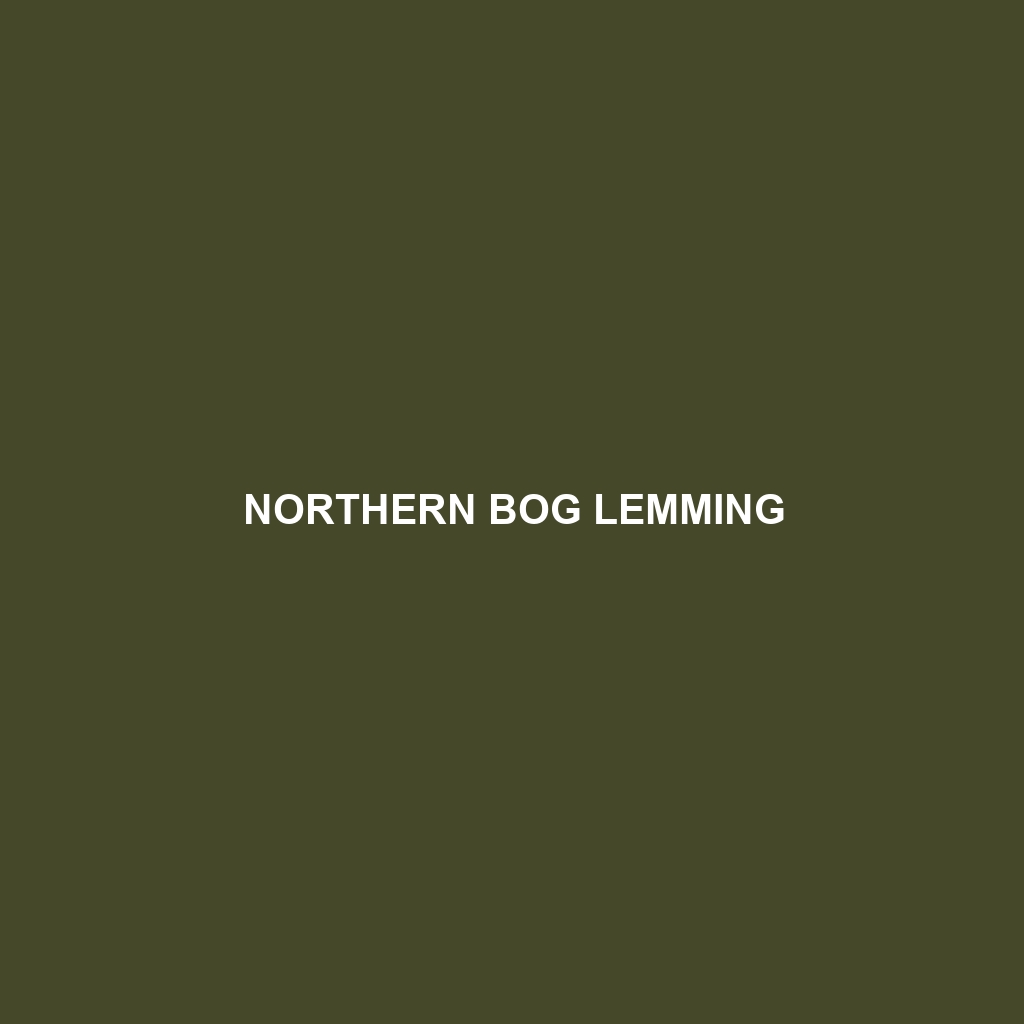Northern Bog Lemming (Scientific Name: Synaptomys borealis)
Common Name: Northern Bog Lemming
Scientific Name: Synaptomys borealis
Habitat
The Northern Bog Lemming is primarily found in the northern regions of North America, particularly in parts of Canada and Alaska. This small rodent thrives in wetland habitats, including bogs, marshes, and tundra ecosystems. Preferring areas with abundant vegetation, these lemmings are often found in sphagnum moss and sedge-dominated landscapes that provide both shelter and food.
Physical Characteristics
Physically, the Northern Bog Lemming averages about 12 to 14 cm in length, with a tail that accounts for roughly one-third of its body size. Its fur is dense and soft, exhibiting a brownish coloring with darker patches on the back and lighter shades on the belly. Notable features include short limbs and a rounded body shape, which distinguish it from other rodent species. These characteristics make the Northern Bog Lemming well-adapted to cold, wet environments.
Behavior
The Northern Bog Lemming exhibits fascinating behaviors that may pique the interest of nature enthusiasts. Known for their burrowing habits, they create intricate tunnel systems within the vegetation of their habitat. These lemmings are primarily nocturnal, spending their nights foraging for food and maintaining their burrows. During the summer breeding season, males are known to engage in vocalizations and display aggressive behaviors to establish territory.
Diet
The diet of the Northern Bog Lemming primarily consists of a variety of plant materials. They feed on grasses, sedges, and other herbaceous plants, supplemented with roots and stems. Their herbivorous diet allows them to thrive in their wetland habitats, where nutrient-rich vegetation is abundant. The consumption of these plants contributes significantly to their role in the ecosystem.
Reproduction
The Northern Bog Lemming typically breeds during the warmer months, with peak seasons occurring from May to July. Females can give birth to up to four litters in a single season, with each litter containing 2 to 6 young. Offspring are born in well-protected nests constructed from grasses and other materials, and they remain dependent on their mothers for nutrition and protection during the early weeks of life.
Conservation Status
Currently, the Northern Bog Lemming is classified as Least Concern by the International Union for Conservation of Nature (IUCN). However, populations in localized areas may face threats due to habitat loss and climate change, which can alter their wetland habitats. Continued monitoring and conservation efforts are crucial to ensure their long-term survival.
Interesting Facts
One unique aspect of the Northern Bog Lemming is their ability to survive in extreme cold temperatures, thanks to their thick fur and social behavior of clustering together for warmth. Additionally, they play a vital role in nutrient cycling within their ecosystems as they burrow through the soil, aiding in aeration and the movement of organic materials.
Role in Ecosystem
The Northern Bog Lemming is an essential component of its ecosystem. As a primary herbivore, it provides a food source for various predators, including owls, hawks, and foxes. Additionally, their burrowing activities help to aerate the soil and promote healthy plant growth, which in turn supports a diverse range of wildlife. By maintaining the balance within their habitat, Northern Bog Lemmings contribute to the overall health of wetland ecosystems.
